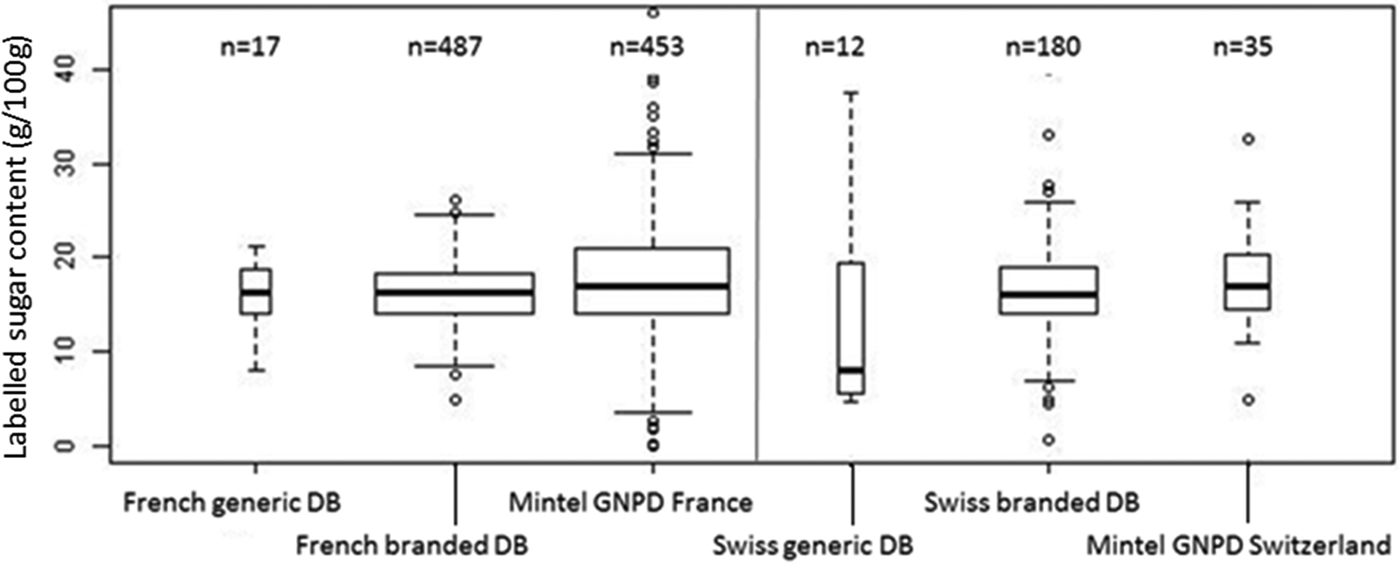An extensive knowledge of the nutrient composition and variability of packaged products available is needed to build and track the efficiency of public health policies( Reference Menard 1 ). Being built to give “the best estimate of the usual composition of foods in the form most commonly obtained or consumed” to evaluate then the population's dietary intake( Reference Greenfield and Southgate 2 ), the national generic food composition databases (FCDB) do not express the variability observed in supermarkets. The need to develop branded FCDB has been highlighted( Reference Carter 3 ) and some initiatives developed, being governmental, commercial, or crowdfunded. This study aimed at assessing the use of generic, government-led branded and commercial FCDB for analysing nutrient content in a certain category.
We analysed the sugar distribution of dairy desserts (a commonly underrepresented category in generic FCDB) in Switzerland and France, from three types of databases: i) the national generic FCDB (Swiss FCDB and Ciqual, respectively), ii) the national branded FCDB (Swiss FCDB and Oqali respectively), iii) the commercial dataset Mintel GNPD collecting information from the label of packaged innovations.
For both countries, the mean sugar content of the generic databases was similar between the three databases. However the variability of the sugar content differed between the generic databases and the branded databases (e.g. inter-quartiles range [14·5; 20·3] for the Swiss branded, [5·6; 19·4] for the Swiss generic FCDB (Figure)).

Figure: Sugar content distributions of dairy desserts in three different type of databases
The national generic FCDB are not done to study the food supply at a product level, and this study showed that they could give a different distribution of nutrient content that branded FCDB, especially in underrepresented categories. Hence, the development of branded FCDB should be encouraged. More research is needed to determine if existing commercial datasets could be already used in the absence of national branded databases.
Acknowledgements
The authors thank Mintel for providing with data for this analysis.





